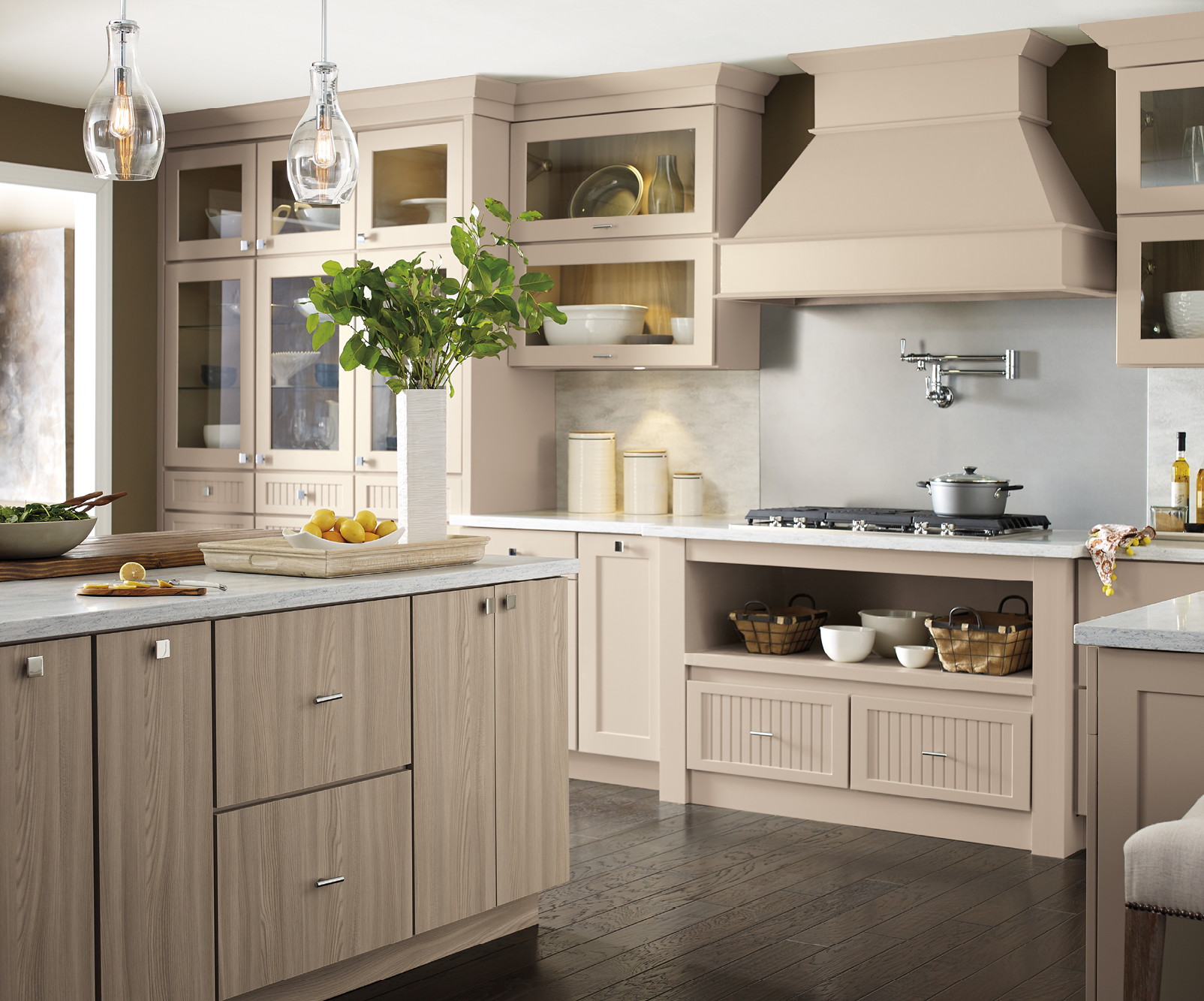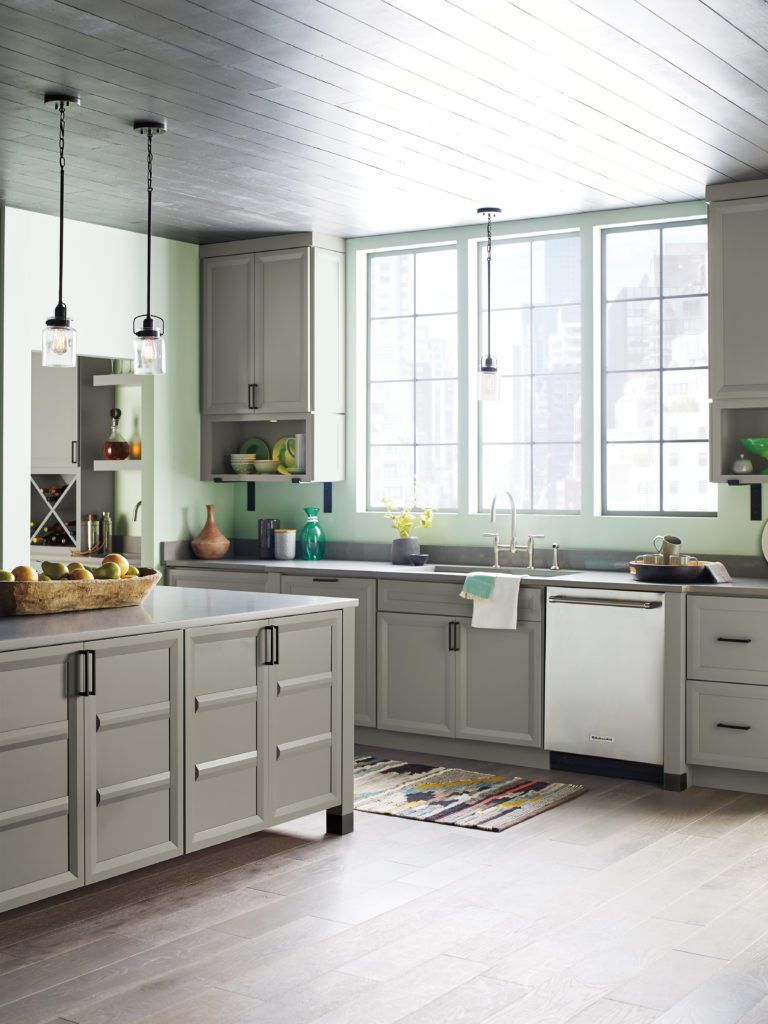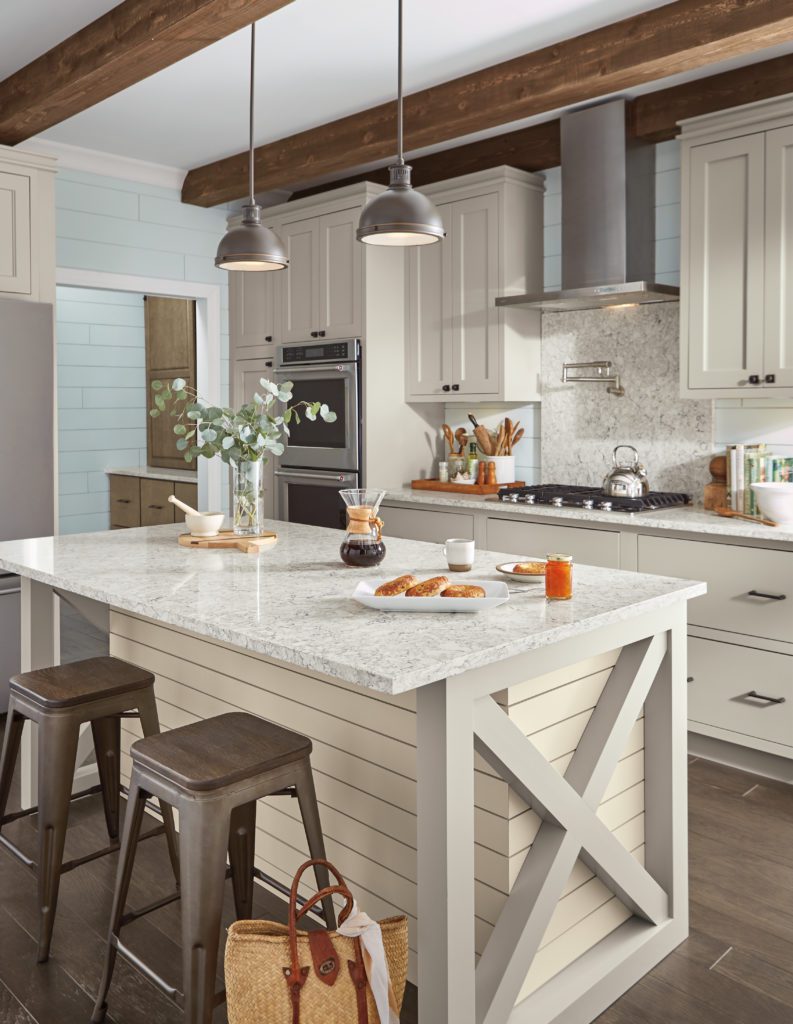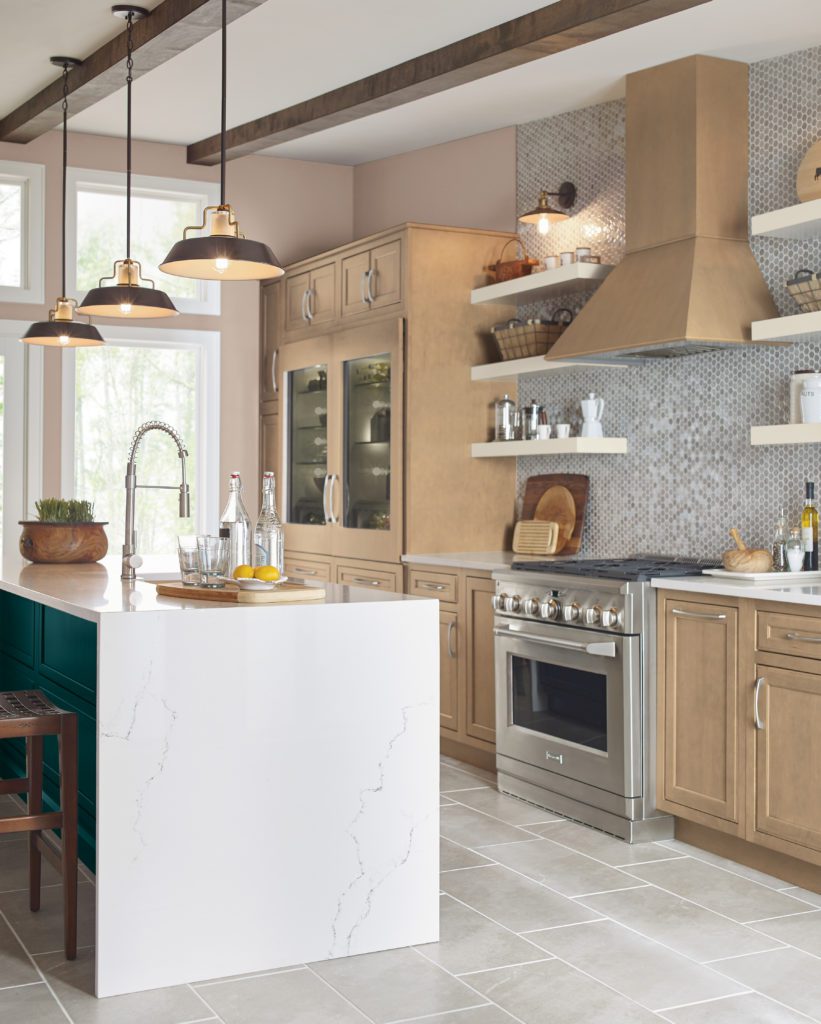Fall is here, the kids are back to school, and a cool crisp is in the air. The holiday season is quickly approaching, and we can’t help to think about hosting gatherings with friends and family. Especially after another year of social distancing, many are getting the urge to host traditional holiday parties. While it’s exciting to think about hosting a party in our own homes, it can also put the pressure on to make those design changes or upgrades you’ve been thinking about. When considering updating a room in the home as large and as popular as a kitchen, you may be wondering, “Where do I start?”. So, we turned to our Cabinet Designers and asked them what they would recommend. At a minimum, here are the first three tasks when beginning a kitchen renovation.
1. Define Your Design
While you don’t need to be able to describe your design aesthetic perfectly, it is helpful if you have some idea of what you want. Aly Williams, Designer at Palmer-Donavin explained, “We can help you take that idea and grow it into a full design, but we need somewhere to start.”
Getting ideas can be fun! Traditionally, homeowners and designers use photography in magazines to create a design board, but now you can opt for social media and digital tools like Houzz, Pinterest, and Instagram. Aly said, “As a designer, this is where my inspiration and drive to try something new comes from.” Between these social sites, there are millions of design photos, home decor and design professionals sharing helpful tips. For example, Houzz, a site with a primary focus on architecture and an interior design community, allows you to easily sort images by design style, so you can determine if you prefer styles that are traditional, mid-century modern, rustic, contemporary, or Mediterranean. Determining which style you identify with most can help with cabinet style, color, and placement.
Even after you have determined a design style that suits you, you should also ask you partner about their preferred aesthetic. Aly said, “We have couples who come in and end up having very different ideas for the space, and it’s helpful when both can agree on a look before it’s time to make choices on details.” Remember, it can be aesthetically or functionally. A big part of the design process is incorporating how you live in your home. Aly added, “You might find functionality is more important than adding floating shelves. Or it can be as simple as knowing you like white, or maybe prefer to not clean your cabinets every day.”
If you struggle with determining what you like, or if you struggle making decisions, another option is to hire an interior designer. They can take away a lot of the stress of decision making and you can feel comfortable the result will be something that suits you. Although our Cabinet Designers are professionals and designers, it may be helpful to find an interior designer that can help with not only the kitchen, but surrounding areas in the home, too.
Now that you’ve dreamed up your vision, you probably want to really envision it in your home. Cabinet manufacturer websites (which are accessible via our website) are helpful at showing different door styles and finishes, they also have a lot of images to help with inspiration and ideas. Sometimes it is best to see the full design before you make the purchase, which is something an interior designer can do. Aly said, “The best tool to use is our 2020 Design program. It’s really the only way that I know to pull an entire design altogether. While we can’t always use this program to fully design each kitchen, you are welcome to ask if it’s possible for your project.”
2. Measure Up
A great way to start the process is to simply take all the measurements of the space and map out your current kitchen and the space where the new kitchen may go. From here, we can determine size of cabinets, appliances, and if a potential island can fit. Many times, kitchen remodels include big changes like removing walls and rearranging plumbing. So, a big step is to determine what can move and what needs to stay. This includes walls, plumbing, electrical and soffits.
How to Measure Your Kitchen
- Draw a line representing each wall of your kitchen on the printed grid and identify each wall. Also count the number of doors and windows in the room.
- Measure the length of each wall. Measure the width of windows and doors and the height of each window, including the frame. Sketch in each window and door on the wall it occupies, and write its measurements.
- Measure the distance of the wall to the left of the sink from the corner to the center of the sink. Sketch the location of the sink on the grid and write the measurement on the sketch.
- Measure from the wall to the left of the dishwasher. Sketch in the dishwasher on the grid and write the measurement from the left wall.
- Measure from the beginning of the wall to the left of your refrigerator. Sketch refrigerator location on the grid. Enter the measurement on your sketch.
- Measure from the beginning of the wall to the left of your range or cooktop. Sketch range location on the grid. Enter the measurement on your sketch.
- If you have a kitchen shape with corners, you will be able to select the type of corner cabinet for your kitchen
Source: Carolina Kitchen
3. Make a Plan
Our designers recommend you always make a plan. Life is busy and we can relate, but this is an investment you want to feel good about. You are most likely only doing a kitchen renovation once, and you will probably put a lot of time and money into this project. Don’t rush it.
When we talk about planning, we mean to take your time to think through how you want your kitchen to function for everyday living. We also think it’s a good idea to plan for delays in product arriving. Recently, there have been unexpected raw material shortages, so be sure to place your order for products at least 4-5 months before your final install date.
If you’ve always wanted to upgrade your kitchen, now is your time. While we know a kitchen project can feel like a tall task, taking it one step at a time means you’ll conquer it and have the kitchen of your dreams. Follow the three steps above and, along with our designers, you can make it happen. Ready to talk to a designer today? Contact us and let us know your plans!




